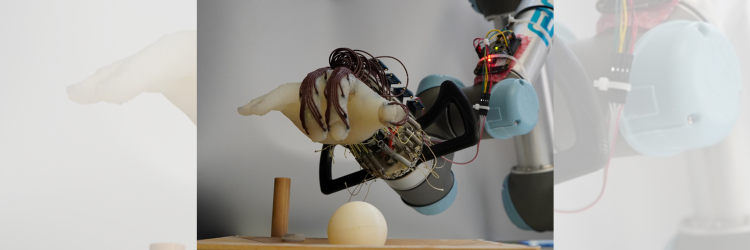The University of Cambridge researchers have created a low-cost and energy-efficient robotic hand that grasps a range of objects without dropping them. Their success lies in using just the movement of its wrist and the feeling in its ‘skin.’ While the soft, 3D-printed robotic hand cannot independently move its fingers, it performs a range of complex movements. They trained the hand to grasp different objects and predict if it would drop them using information from sensors on its ‘skin.’ Their results are in the journal Advanced Intelligent Systems.
The researchers used a 3D-printed anthropomorphic hand implanted with tactile sensors to sense what it was touching. It was only capable of passive, wrist-based movement. The robot was initially trained using small 3D-printed plastic balls and grasped them using a pre-defined action learned through human demonstrations.
The tactile sensors give the robot a sense of how well the grip is going, so it knows when the object it’s holding starts slipping. The robot used trial and error to learn what kind of grip would be successful. After finishing training with the balls, it attempted to grasp objects like a peach, a computer mouse, and a roll of bubble wrap. The hand successfully held 11 of 14 objects.
According to the team, the design’s advantage is its range of motion without using actuators. The Cambridge-designed hand, using a small number of sensors, is easy to control, provides a wide range of motion, and streamlines the learning process.

